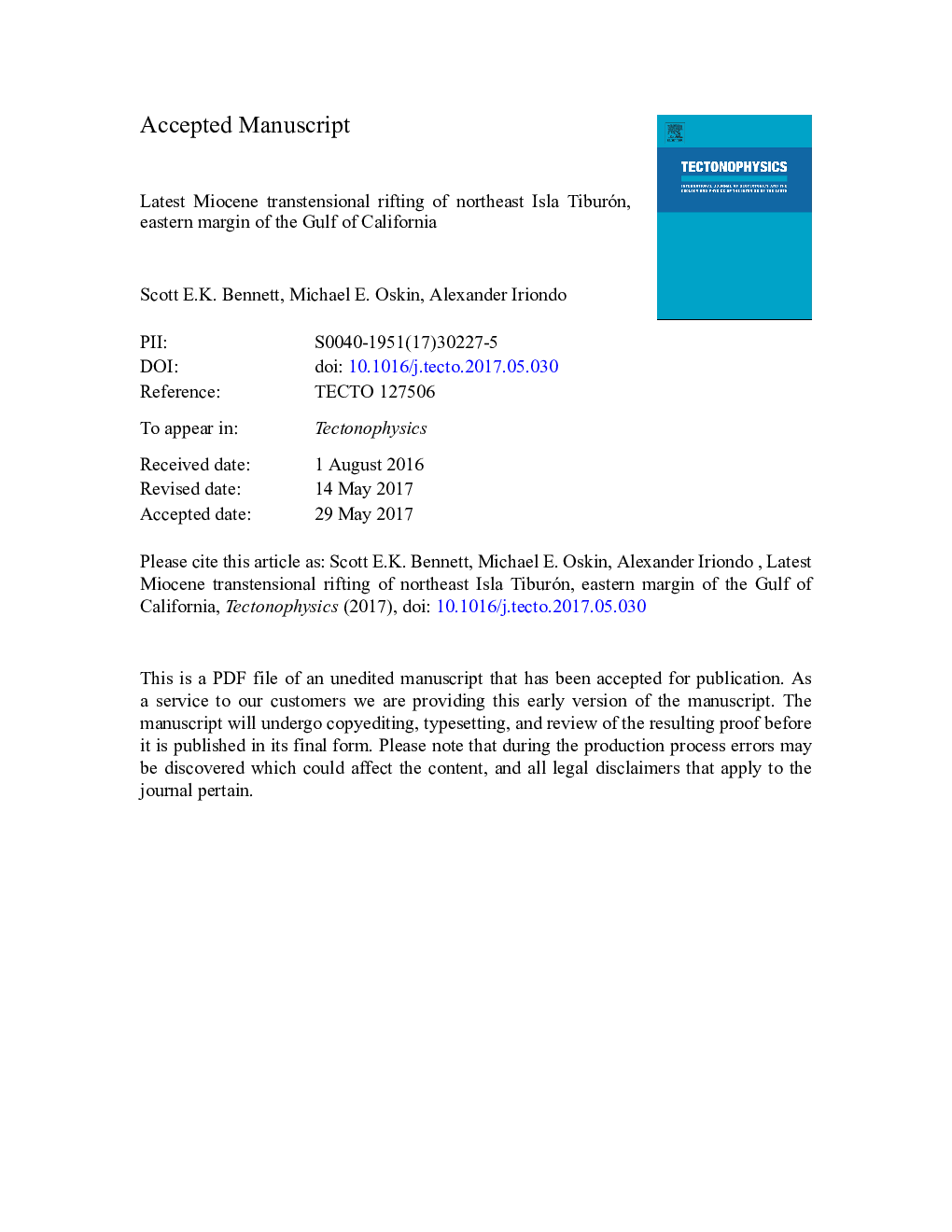| Article ID | Journal | Published Year | Pages | File Type |
|---|---|---|---|---|
| 8908856 | Tectonophysics | 2017 | 63 Pages |
Abstract
Details about the timing and kinematics of rifting are crucial to understand the conditions that led to strain localization, continental rupture, and formation of the Gulf of California ocean basin. We integrate detailed geologic and structural mapping, basin analysis, and geochronology to characterize transtensional rifting on northeastern Isla Tiburón, a proximal onshore exposure of the rifted North America margin, adjacent to the axis of the Gulf of California. Slip on the Kunkaak normal fault tilted its hanging wall down-to-the-east ~ 70° and formed the non-marine Tecomate basin, deposited across a ~ 20° angular unconformity. From 7.1-6.4 Ma, the hanging wall tilted at 35 ± 5°/Myr, while non-marine sandstone and conglomerate accumulated at 1.4 ± 0.2 mm/yr. At least 1.8 ± 0.1 km of sediments and pyroclastic deposits accumulated in the Tecomate basin concurrent with clockwise vertical-axis block rotation and ~ 2.8 km of total dip-slip motion on the Kunkaak fault. Linear extrapolation of tilting and sedimentation rates suggests that faulting and basin deposition initiated ~ 7.6-7.4 Ma, but an older history involving initially slower rates is permissible. The Kunkaak fault and Tecomate basin are truncated by NW-striking, dextral-oblique structures, including the Yawassag fault, which accrued > 8 km of post-6.4 Ma dextral displacement. The Coastal Sonora fault zone on mainland Sonora, which accrued several tens of kilometers of late Miocene dextral offset, continues to the northwest, across northeastern Isla Tiburón and offshore into the Gulf of California. The establishment of rapid, latest Miocene transtension in the Coastal Sonora fault zone was synchronous with the 8-7 Ma onset of transform faulting and basin formation along the nascent Pacific-North America plate boundary throughout northwestern Mexico and southern California. Plate boundary strain localized into this Gulf of California shear zone, a narrow transtensional belt that subsequently hosted the marine incursion and continental rupture in the Gulf of California.
Keywords
Related Topics
Physical Sciences and Engineering
Earth and Planetary Sciences
Earth-Surface Processes
Authors
Scott E.K. Bennett, Michael E. Oskin, Alexander Iriondo,
